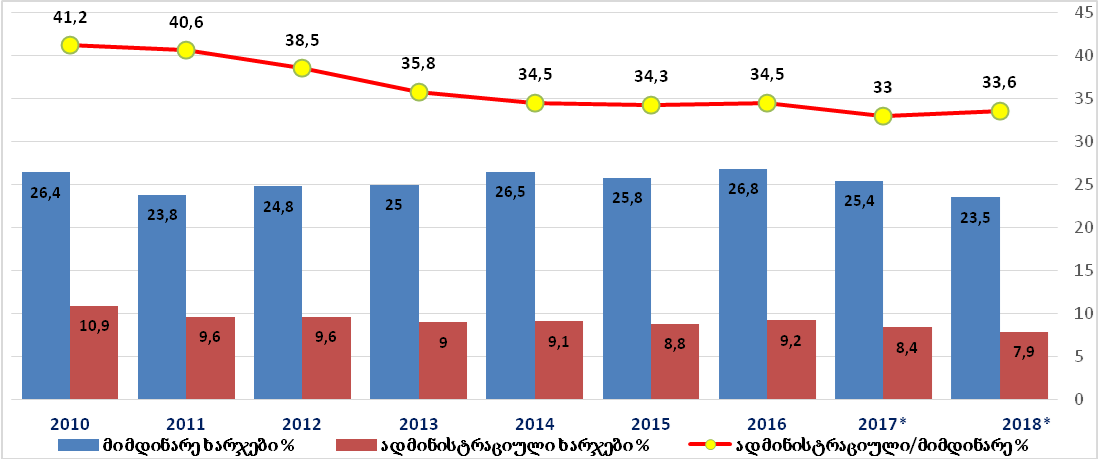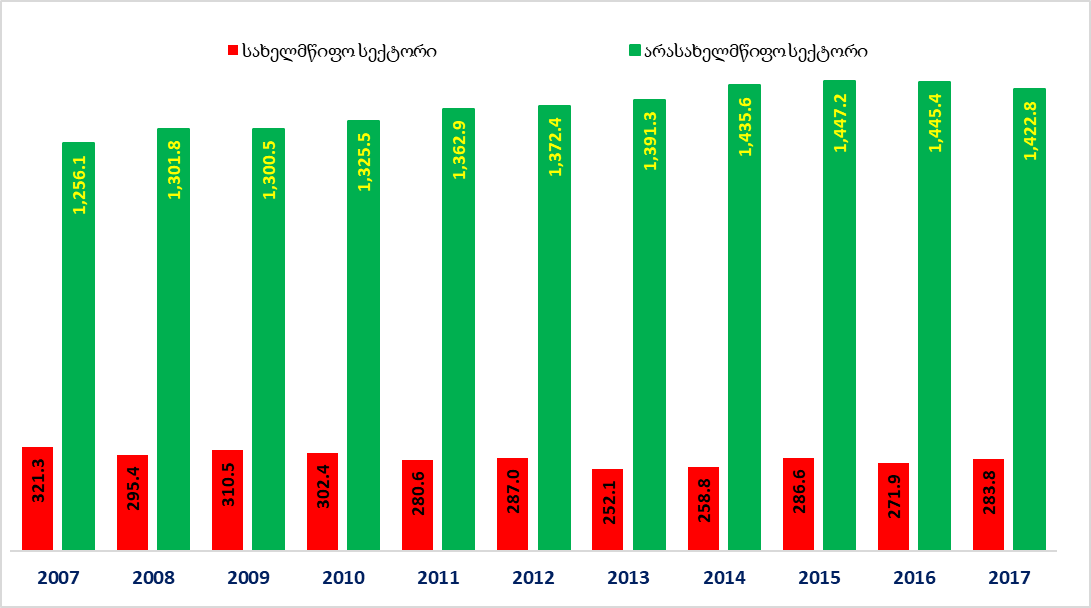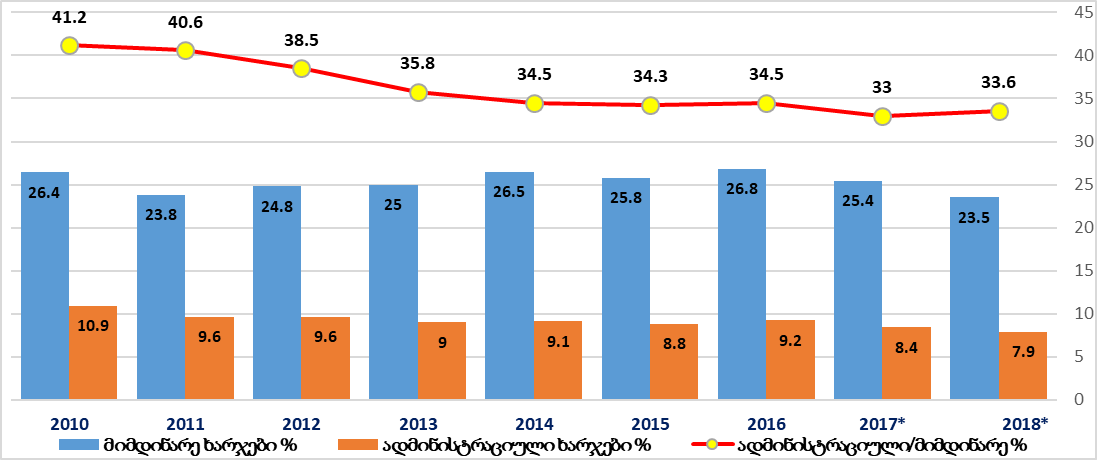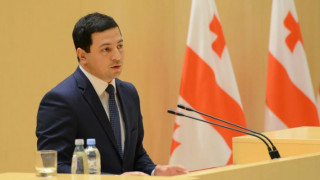Resume: Generally, employment is divided into two main sectors – private and public. It is beneficial for the economy if employment in the public sector (in other words, bureaucracy) is low and jobs are created by the private sector. Archil Talakvadze highlights this aspect in his statement.
As of 2017, the number of those employed in the private sector decreased by 22.6 thousand (-1.6%) whilst the number of those employed in the public sector increased by 11.9 thousand (4.4%) in the same year. There was no growth in private sector employment in 2016 as well. However, this was stipulated by the highest number of employment in the public sector registered in 2015.[1]
In 2009-2012, there was a tendency of decline in public sector employment and a tendency of growth in private sector employment. On the contrary, the number of those employed in the public service had a tendency of growth in 2013-2017 whilst the amount of growth in private service employment is lower as compared to the 2008-2012 figures. Therefore, Archil Talakvadze is wrong in this part of his statement.
In 2013-2017, the GDP to consolidated budget expenses ratio did not decrease and fluctuated within the margins of 25%-26% without a clear trend of either decrease or increase. Administrative expenses have a tendency to drop. The only exception was 2016 when the GDP to administrative expenses ratio did increase. In accordance with 2017’s data, this figure is 1.2 percentage points lower as compared to 2012.
Analysis
Parliamentary Majority leader, Archil Talakvadze, spoke about employment and administrative expenses. As stated by Mr Talakvadze, the number of those employed in the public sector is not increasing but, on the contrary, employment is on the rise in the private sector. In addition, the MP brought up the issue of administrative and current expenses, claiming that these expenses in the public sector have been cut.
The National Statistics Office of Georgia publishes statistical data about employment and unemployment both in the state and non-state sectors. Private sector employment figures given in Graph 1 include all of those individuals who do not have jobs in the state sector. This also includes the category of self-employed. On the other hand, the state sector includes all of those individuals who are employed in state and self-government organs, organisations funded and/or founded/controlled by the state and self-government organs as well as state enterprises.
The number of those employed in the state sector was 283.8 thousand in 2017. This constitutes an increase of 11.9 thousand (4.4%) as compared to 2016. Of note is that employment in this sector experienced a sharp decrease in 2013 when the figure was at its lowest – 252.1 thousand. In the following years, employment in the public sector increased again. In 2009-2012, employment in the public sector dropped by 0.6% on average annually whilst it decreased by 12.2% in 2013 which is the largest decrease in the last ten years. In regard to 2014-2017, the number of those employed in the public sector increased by 3.2% on average annually.
In 2017, employment in the private sector dropped by 1.6%. The 2016 private sector employment figure was also lower as compared to 2015. In 2013-2017, employment in the private sector increased by 0.7% on average annually whilst the annual growth was 1.8% on average in 2008-2012.
Graph 1: Employment Figures in 2007-2017 (thousand persons)
Source: National Statistics Office of Georgia
Graph 2: Annual Growth of Employed in 2007-2017 (%)
Source: National Statistics Office of Georgia
When speaking about the public sector’s administrative expenses, we need to calculate the sum of the funds allocated for labour remuneration as well as for goods and services in the consolidated budget. At the same time, whilst calculating current expenses, focus should be made on the total expenses budget line which includes not only labour remuneration and goods and services but subsidies, interest rates, grants, social security and other expenses as well. The consolidated budget is that which combines the state budget, the budget of the autonomous republic and the budgets of self-government bodies. Considering the fact that the amount of the budget is rising in absolute numbers, it is necessary to analyse the tendency of changes in the GDP to the aforementioned expenses ratio. The relative figure will show what percentage of funds is spent by the public sector as a part of the total economy.
The estimated current expenses of the 2018 consolidated budget are GEL 9,555 million which is 23% of 2018’s estimated GDP. This figure decreased by 1.9 percentage points as compared to 2017. The GDP to current expenses ratio increased from 23.8% to 26.5% in 2011-2014 whilst it decreased by 0.7% in 2015. It increased again in 2016 to 26.8% but then the following years witnessed a decline. There is no consistent decrease for the entire period and the figure fluctuates within the margins of 25%-26% without any clear tendency.
In the 2018 consolidated budget, similar to the current expenses, the estimated administrative expenses also decreased and constitute 7.9% of Georgia’s GDP. It has kept an annual tendency of decrease over the past years. The only exception is 2016 when the GDP to administrative expenses ratio increased from 8.8% to 9.2%. In accordance with 2017-2018’s preliminary and estimated figures, the aforementioned ratio will decrease from 8.4% to 7.9%.
Graph 3: GDP to Current and Administrative Expenses Ratio in 2010-2018[2] Consolidated Budgets

Source: State Treasury, Ministry of Finance, National Statistics Office of Georgia
In addition to the aforementioned analysis, it is important to show what part of the current expenses are administrative expenses (the total sum of expenses associated with labour remuneration as well as the purchase of goods and services). In accordance with 2018’s estimated figures, the public sector’s administrative expenses constitute 33.6% of the current expenses whilst this amount was 33% in 2017. Of note is that the figure has been declining since 2010 although it has not significantly decreased since 2013.
Of additional note is that when the Ministry of Finance drafts the consolidated budget, the budgets of municipalities have not yet been approved. The existing practice shows that the budgets of self-governing entities are amended significantly after approval and are usually increased. As a result, the current and administrative expenses of self-governing bodies also increase. Therefore, the estimated expenses figures for the 2018 consolidated budget are likely to increase by the end of the year.
[1] The growth of the number of those employed in the public sector in 2015 was significantly affected by the preparatory work for the 2015 European Youth Summer Olympic Festival
[2] Estimated figures for 2018 and preliminary figures for 2017










